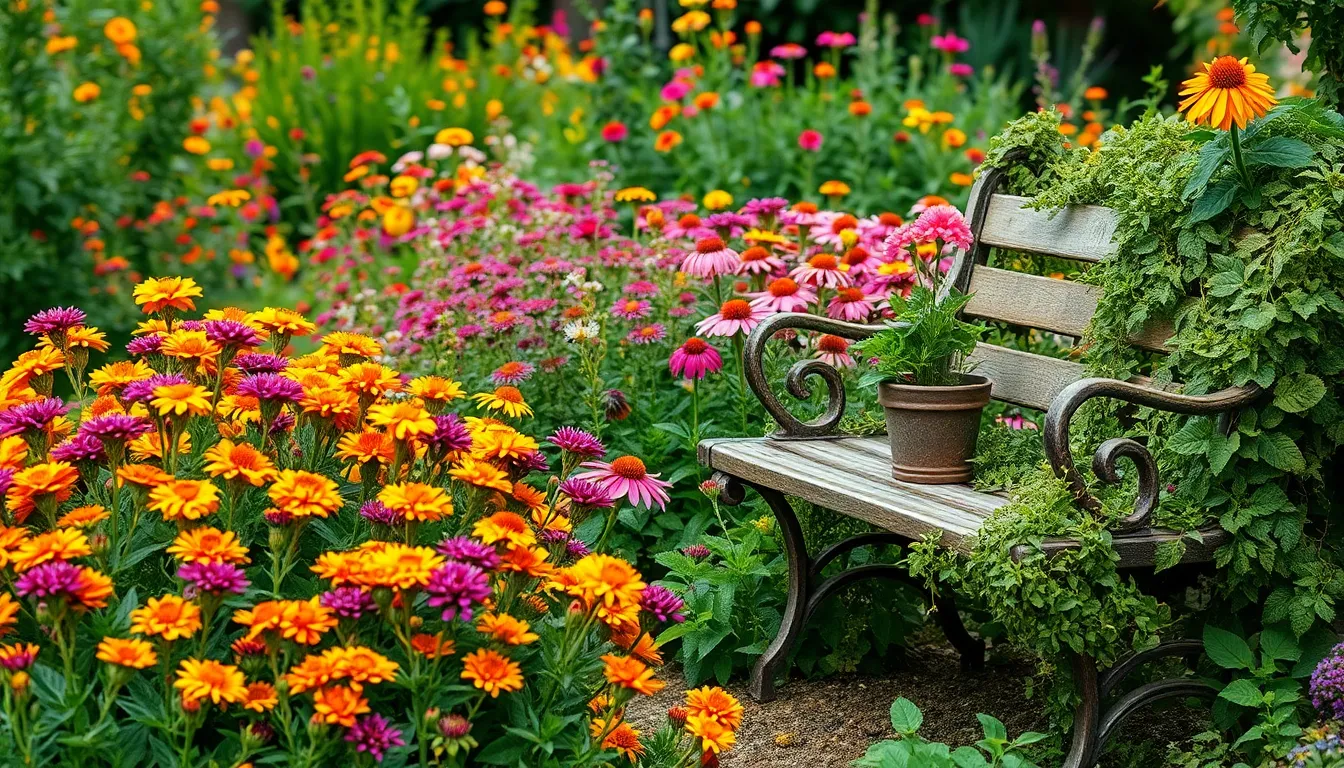Imagine stepping into your garden and being greeted by the graceful dance of butterflies flitting from flower to flower. Creating a butterfly garden is not just a delightful way to enhance the beauty of your outdoor space; it’s also an essential step towards supporting our ecosystem. Whether you’re a seasoned gardener or just starting with your first few pots, cultivating a haven for these delicate pollinators is a rewarding endeavor that enriches your gardening experience and contributes to environmental conservation.
This guide will walk you through the joys and intricacies of designing a butterfly-friendly garden, tailored for both novice and experienced green thumbs. You’ll discover how to select the right plants that provide nectar and habitats for butterflies at various life stages, and learn practical tips on garden layout and maintenance. By the end of this article, you’ll be equipped with the knowledge to transform your garden into a vibrant sanctuary, inviting in the colorful magic of butterflies while fostering biodiversity.
Select Native Butterfly Plants
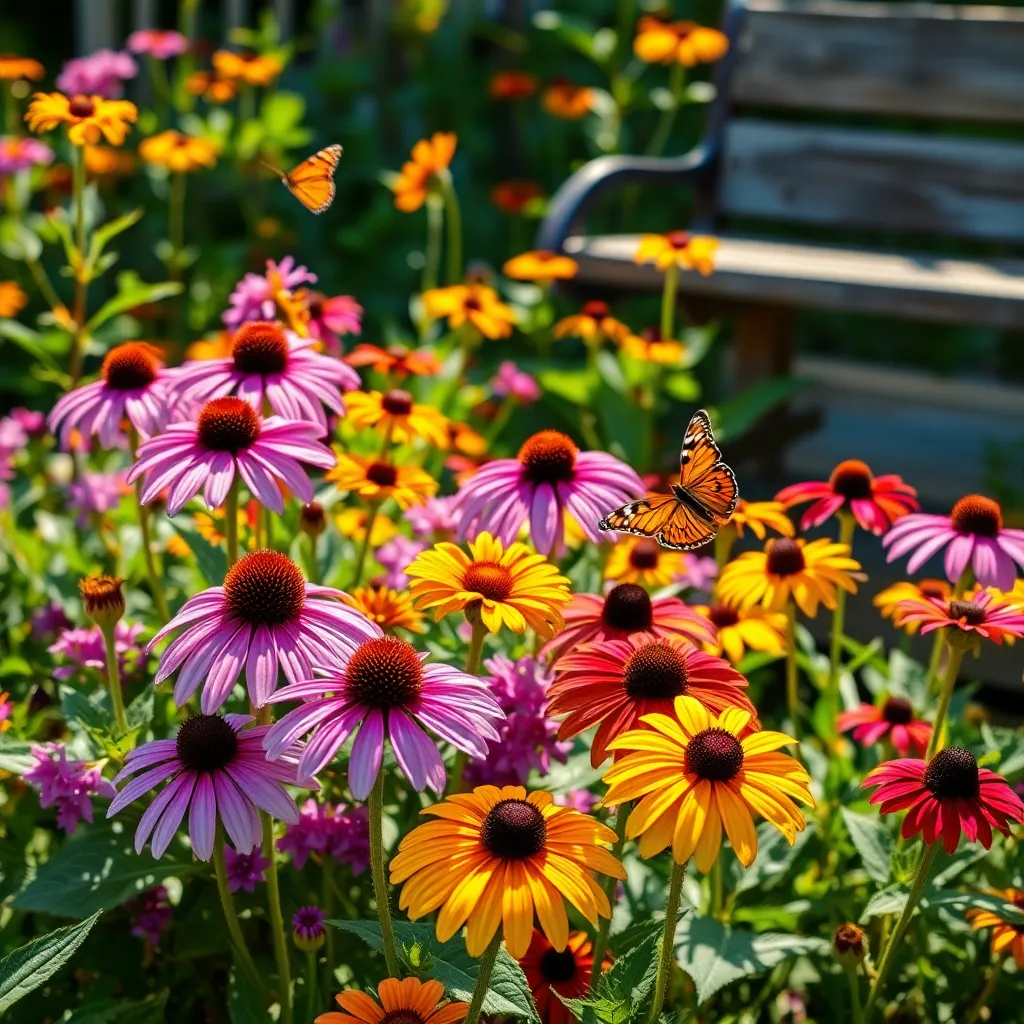
Choosing native plants for your butterfly garden is a key step in creating a thriving ecosystem. Native plants are well-adapted to local climates and soil types, making them easier to care for and more resilient to pests and diseases.
To attract a variety of butterflies, consider planting species such as milkweed, coneflowers, and asters. These plants provide both nectar for adult butterflies and host resources for caterpillars, ensuring a continuous life cycle.
When selecting plants, ensure you have a mix that blooms at different times of the year. This strategy provides a consistent food source for butterflies throughout their active seasons.
Soil preparation is important for the success of native plants. Use well-draining soil enriched with organic matter to enhance growth and water retention.
Watering needs will vary depending on your chosen plants, but generally, native plants require less water once established. Mulching around the base of the plants can help retain moisture and suppress weeds, reducing maintenance.
For those looking to dive deeper, consider the specific light requirements of each plant. Group plants with similar sunlight needs together to optimize growth and butterfly visitation.
Design a Sunlit Garden Layout
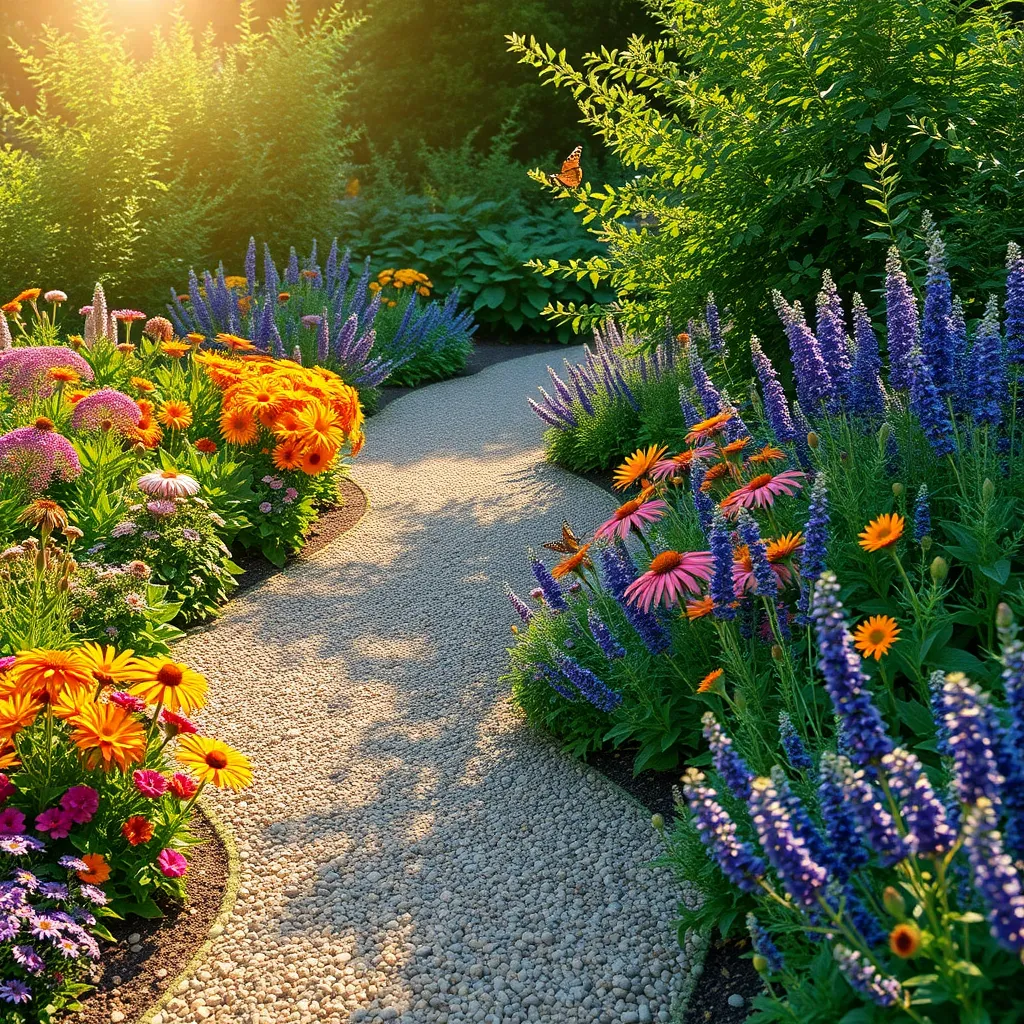
To design a sunlit garden layout, first identify the areas in your space that receive the most sunlight throughout the day. Typically, butterflies are more active in sunny spots, making these areas ideal for planting nectar-rich flowers.
Consider a mix of perennials and annuals to provide continuous blooms and food for butterflies. Perennials like coneflowers and black-eyed Susans offer reliable blooms year after year, while annuals like zinnias and cosmos can fill any gaps with vibrant colors.
To ensure your plants thrive, choose a well-draining soil that remains moist but not soggy. Adding compost can improve soil quality and provide essential nutrients, helping to maintain healthy, vigorous plants that will attract butterflies.
Plant taller varieties at the back of your garden bed and shorter ones at the front to create an attractive layered effect. This not only enhances visual appeal but also provides butterflies with easy access to different flower heights to feed on.
Prepare Well-Draining Soil
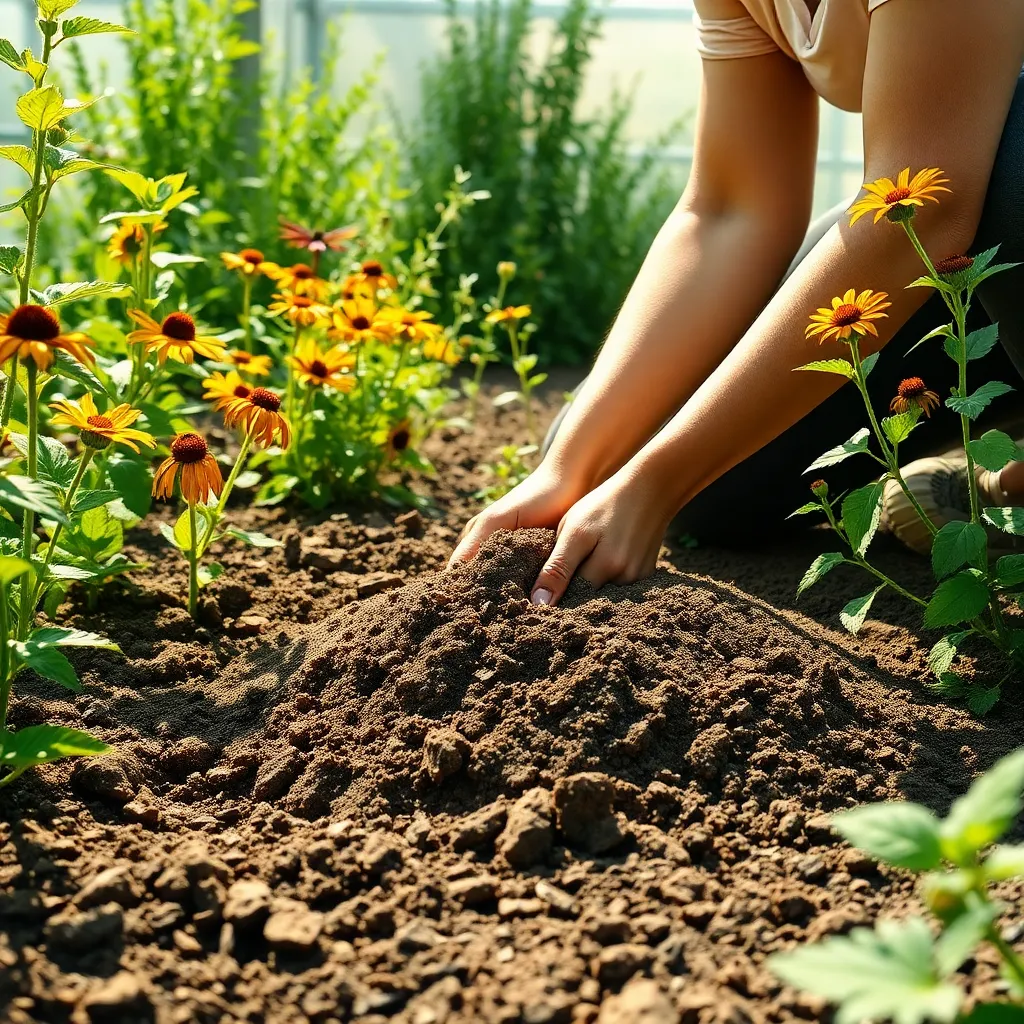
Creating well-draining soil is crucial for a thriving butterfly garden, as it ensures plants receive the right amount of moisture without becoming waterlogged. Begin by assessing your existing soil; if it feels dense and sticky, it’s likely clay-heavy and needs modification.
One effective method to improve drainage is to incorporate organic matter like compost or aged manure, which increases soil aeration. Mix these materials into the top 6 to 12 inches of soil, allowing plant roots to access the enriched layer easily.
Another approach is to add coarse sand or small gravel, which helps break up compacted soil and improves drainage. This can be particularly beneficial in areas where heavy rains are common, ensuring your plants don’t suffer from root rot.
Consider testing your soil’s pH level, as many butterfly-attracting plants prefer slightly acidic to neutral conditions. Amending your soil with pine needles or elemental sulfur can adjust the pH as needed, promoting optimal growth.
Plant Nectar and Host Flowers
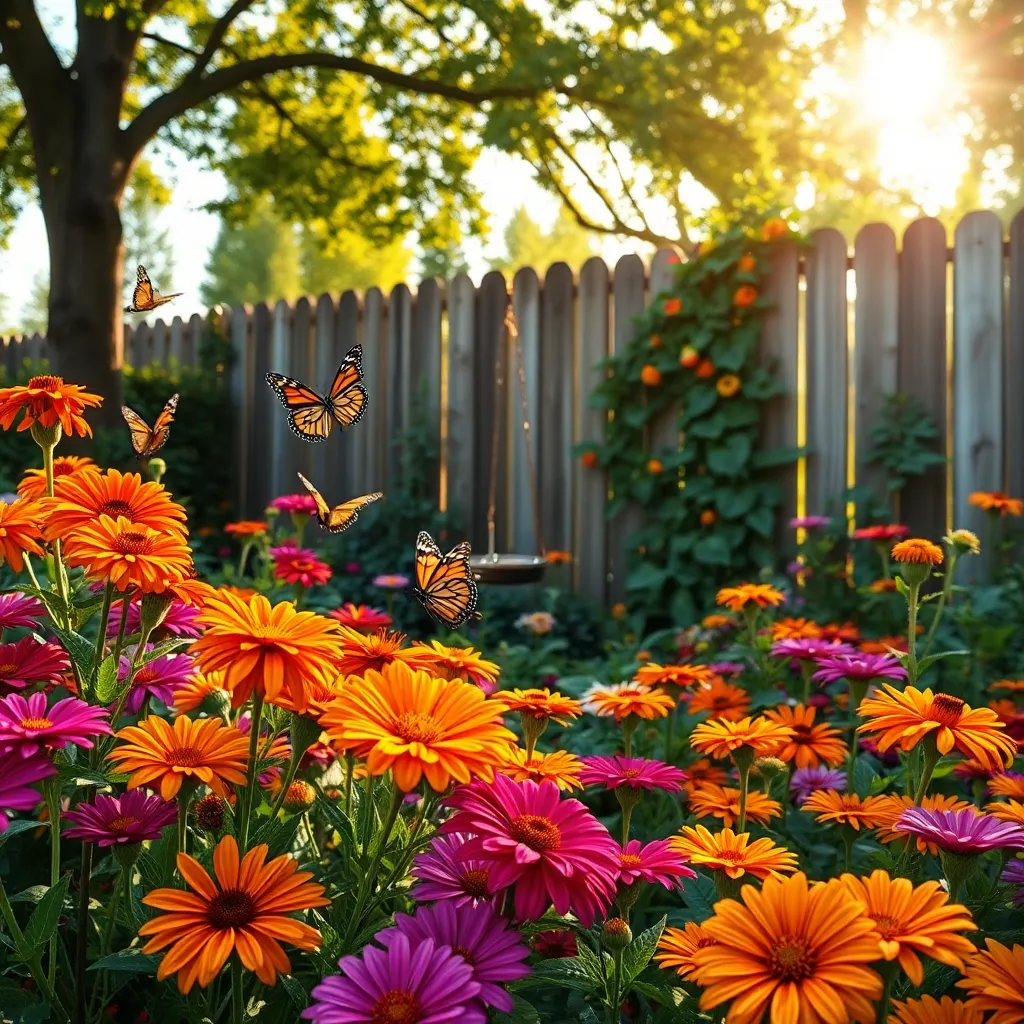
To attract a variety of butterflies, it’s essential to plant a mix of nectar-rich flowers and host plants in your garden. Nectar-rich flowers provide the necessary food for adult butterflies, while host plants are crucial for caterpillars to feed on.
Choose nectar flowers like coneflowers, lantanas, and zinnias, which thrive in full sun and well-drained soil. These flowers not only provide nourishment but also add vibrant colors to your garden, making it an inviting space for both butterflies and humans.
For host plants, consider species that caterpillars can munch on such as milkweed for monarchs and parsley for swallowtails. These plants should be placed in areas where they receive ample sunlight for at least six hours a day to ensure healthy growth and support for butterfly life cycles.
Water your plants appropriately, ensuring that the soil remains moist but not waterlogged. A layer of mulch can help retain moisture and regulate soil temperature, which is beneficial for both nectar and host plants.
For those looking to enhance their butterfly garden further, try staggering the bloom times of your flowers for a continuous food supply. Additionally, consider planting native species as they often require less maintenance and are more attractive to local butterfly populations.
Add Water Sources and Shelter
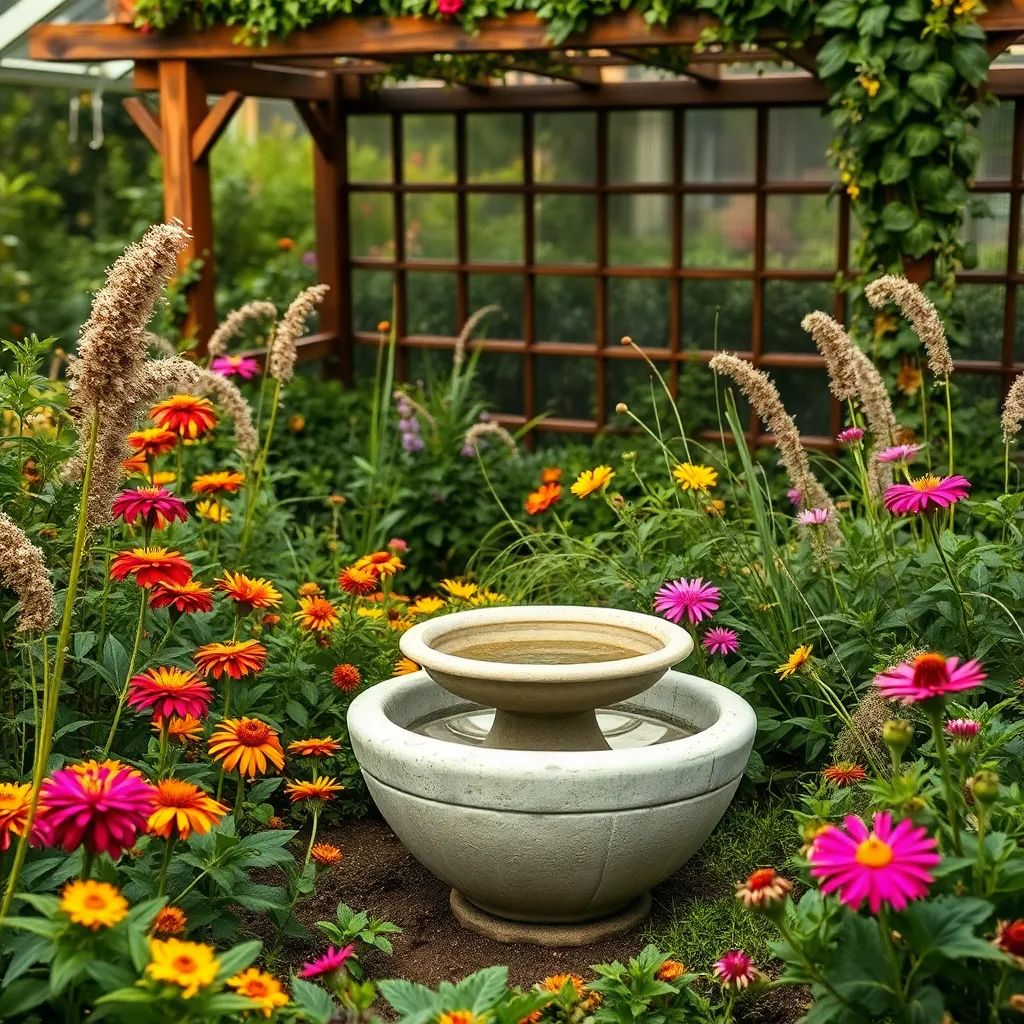
Butterflies need more than just flowers to thrive; they also require water sources. A shallow dish filled with sand and water can act as a perfect puddling station, providing essential minerals they need.
Consider adding a small, shallow birdbath or a strategically placed drip hose. These features not only help butterflies stay hydrated but also attract other beneficial insects to your garden.
Incorporating shelter into your butterfly garden is equally important. Place rocks or small logs around the garden to create hiding spots from predators and protection from harsh weather.
Tall grasses and dense shrubs can serve as natural windbreaks and resting areas. Ensure these plants are positioned to provide optimal coverage without overshadowing the sun-loving blooms.
For an advanced touch, build or buy a butterfly house to add an artistic yet functional element. These shelters offer a safe haven during inclement weather, increasing the chances of butterflies returning to your garden.
Conclusion: Growing Success with These Plants
As we wrap up our exploration of ‘How To Create A Butterfly Garden’, let’s revisit the five key relationship concepts we’ve discovered. First, we learned the importance of creating a nurturing environment that allows love to flourish, much like preparing fertile soil for a garden. Second, we discussed the value of patience and understanding, akin to waiting for butterflies to emerge from their cocoons. Third, we recognized the power of open communication, reflecting the vibrant colors that attract diverse butterflies. Fourth, we acknowledged the necessity of setting boundaries, just as a garden needs protection against harsh elements. Lastly, we celebrated the joy of shared experiences, reminiscent of watching butterflies dance together in the sunlight.
Now, as an immediate step, pick one aspect of your relationship that could benefit from nurturing and take a small but meaningful action today. Whether it’s a heartfelt conversation or a simple gesture of love, start now.
Remember, relationships, much like gardens, require ongoing care and attention. Bookmark this article to revisit these insights and cultivate a flourishing relationship garden. Together, let’s look forward to a future where your relationships blossom with love and understanding. Your commitment today is the seed for tomorrow’s success.

